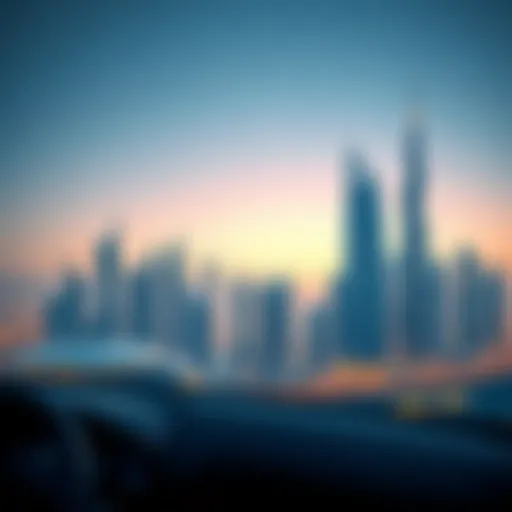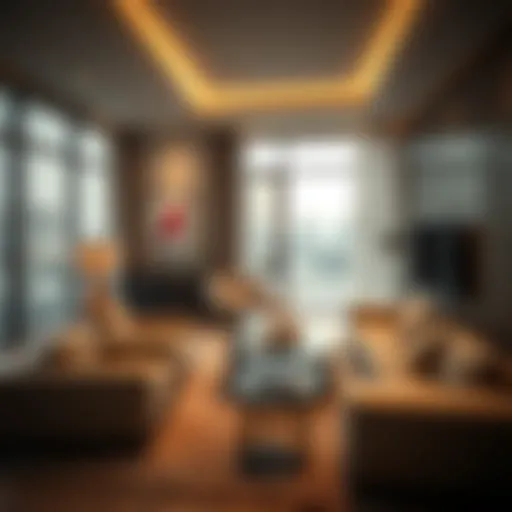Discovering Burj Khalifa, Dubai Mall, and Metro Connections
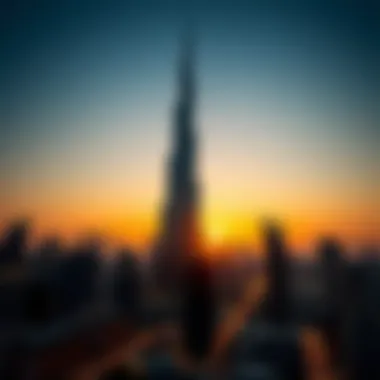
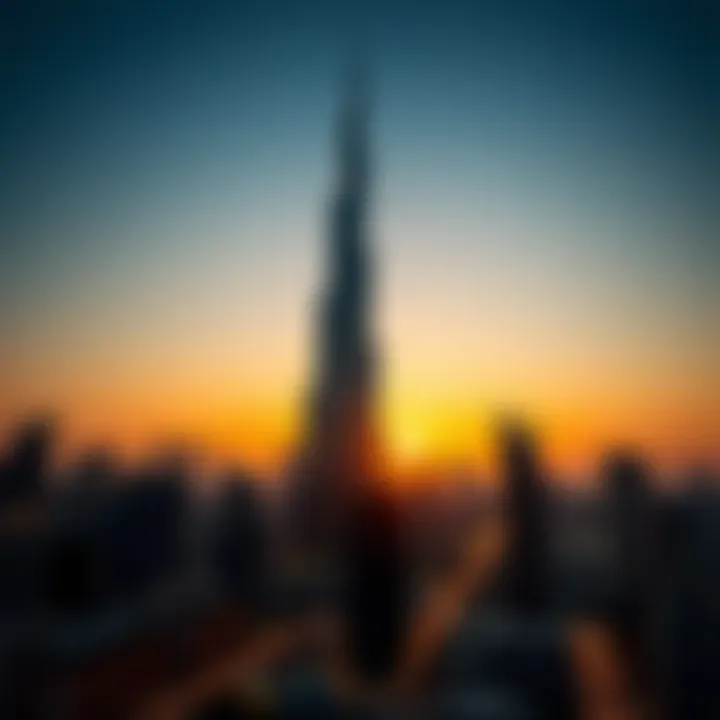
Intro
Nestled in the heart of Dubai, the intertwining relationship of the Burj Khalifa, Dubai Mall, and the efficient metro system serves as a testament to the city's rapid urban evolution. Each of these landmarks, in their unique ways, shapes not just the skyline but also the economic landscape, drawing tourists and investors alike. Understanding this triad is key for anyone looking to grasp the Dynamics of the Dubai real estate market, whether you’re an investor eyeing potential returns, a developer scouting for promising plots, or simply a curious visitor eager to know more.
In the following sections, we will delve into the market analysis, illuminating current trends and historical performance within both the surrounding area and broader Dubai real estate market. Furthermore, we will explore investment opportunities, shedding light on the best areas for real estate investment along with insights into property value appreciation. By synthesizing this information, the article aims to equip readers with a comprehensive understanding of how these iconic landmarks influence mobility, commerce, and luxury.
Market Analysis
Understanding the market dynamics surrounding the Burj Khalifa and Dubai Mall requires a closer look at current trends and historical performance in the region's real estate sector.
Current Trends in Dubai Real Estate
Dubai’s real estate market has witnessed significant shifts, particularly as the city positions itself to welcome tourists and investors post-pandemic. The demand for both residential and commercial properties remains buoyant, driven by a mix of local and foreign investment. With the Burj Khalifa standing tall, it symbolizes not only an architectural marvel but also a lucrative market potential. Reports indicate a rise in demand for luxury apartments and upscale retail spaces, indicative of increasing affluence and lifestyle changes among residents and expatriates.
Historical Market Performance
Historically, Dubai's real estate market has been through its ups and downs. The aftermath of the 2008 financial crisis hit hard, leading to a price correction. However, the city's aggressive diversification away from oil dependency towards tourism, tech, and education has steadily revived property values. Between 2015 and 2020, the market witnessed fluctuations, but recent years have indicated a resurgence. This reflects a broader trend where strategic infrastructure investments, like enhancing the metro system, create attractive environments for development.
"The interconnectedness of luxury, commerce, and accessibility is redefining urban landscapes across the globe, and Dubai's approach is no exception."
By observing current trends alongside historical performance, one can glean a clearer picture of how these iconic landmarks influence both economic vitality and real estate opportunities in Dubai.
Investment Opportunities
For savvy investors looking to leverage the ongoing developments and attractions near the Burj Khalifa and Dubai Mall, identifying the best areas for real estate investment becomes essential.
Best Areas for Real Estate Investment
The immediate neighborhoods around the Burj Khalifa are emerging as prime areas for investment. Notably, Downtown Dubai stands out as a premium residential and commercial hub, benefiting greatly from the buzz generated by the Burj and Dubai Mall. Other nearby locales, such as Business Bay and DIFC (Dubai International Financial Centre), are increasingly popular due to their strategic locations and investment incentives.
- Downtown Dubai: High-end residential units close to world-class amenities.
- Business Bay: A burgeoning financial district with office spaces and apartments.
- DIFC: A major business zone attracting multinational companies, correlating to increased demand for nearby housing.
Understanding Property Value Appreciation
Property value appreciation in these areas is supported by a slew of factors. The ongoing projects in infrastructure and community development create favorable conditions for investment. With rising demand frequently outpacing supply, property values are likely to appreciate, making investments potentially rewarding.
Given that the Burj Khalifa continues to captivate global tourists, the commercial opportunities around it are immense. For buyers looking at long-term value or renters seeking new livable spaces, understanding these market conditions can lead to informed decisions.
As we conclude this exploration of market dynamics and investment avenues, the interplay between the Burj Khalifa, Dubai Mall, and the metro system presents a rich tapestry of opportunity and growth, paving the way for a new era in Dubai's real estate landscape.
Understanding the Burj Khalifa
The Burj Khalifa is not just a towering structure but a symbol that embodies Dubai's ambition and growth. As the tallest building in the world, it stands at a staggering height of 828 meters and garners attention from people around the globe. The importance of understanding this remarkable edifice lies in its rich interplay of architecture, culture, and economics. For investors, it represents a key alignment with a city striving to position itself at the forefront of innovation and luxury.
Architectural Highlights
Crafted with an eye for both aesthetics and functionality, the Burj Khalifa combines cutting-edge design with sustainable practices. Designed by the renowned architect Adrian Smith, its sleek, tapering silhouette mimics the pattern of the Hymenocallis flower, a local flora. This design isn’t just for show; it’s specifically engineered to withstand the strong winds that whip through Dubai. What’s more, the building features a series of setbacks that create an illusion of height while allowing for natural light.
Key Features of the Burj Khalifa:
- Sky Observation Deck: Located on the 148th floor, the deck offers an unparalleled view of the city and beyond, making it a hot spot for tourists and photographers alike.
- Exterior Cladding: The exterior is clad in a reflective glass and a polished stainless steel, which not only adds to its allure but also aids in temperature regulation inside the building.
- Sustainable Systems: Cutting-edge water conservation techniques and energy-efficient systems set new standards in skyscraper design.
Understanding these architectural highlights provides insights into what makes the Burj Khalifa a magnet for tourists and a symbol of modern engineering prowess. It showcases how architectural innovation can serve both aesthetic and practical purposes.
Visitor Experience
A visit to the Burj Khalifa is more than just a trip to a high-rise; it’s an experience that draws one into the heart of Dubai's modernization narrative. The atmosphere begins at the base, where the grand entrance welcomes thousands of visitors daily. The ticketing process is streamlined, but expectations of long lines during peak hours remain, so timing is key.
Once inside, visitors are escorted to elevators that zoom up to the observation decks at speeds reaching six meters per second. Upon reaching the top, one is greeted with breathtaking panoramic views of the city, the desert, and the sea. The experience is complemented by multilingual digital guides, ensuring that diverse nationalities enjoy their visit.
Visitor Considerations:
- Best Times to Visit: Early morning or just before sunset provides a captivating experience, whether you wish to capture the vibrant city life or to witness the sun dipping below the horizon.
- Accessibility: The observation deck is accessible to visitors with disabilities. Consider early bookings to ensure a seamless entry and avoid the crowds.
- Educational Value: Interactive exhibits within the Burj teach about Dubai’s history and the engineering feats involved in constructing this iconic structure, making it a multidimensional affair.
The visitor experience at the Burj Khalifa is crafted to engage both mind and senses, offering not just views, but a narrative that weaves personal stories into the fabric of Dubai’s ongoing tale of dynamism and growth.
The Role of Dubai Mall in the Landscape
The Dubai Mall stands as a pivotal feature in the urban ecosystem of Dubai, making its mark not just as a shopping center, but as a vibrant hub that integrates commerce, culture, and tourism. In this section, we assess its implications for the surrounding area, elaborating on why it occupies such a significant space in this guide and in the hearts of visitors and residents alike. The mall's role transcends mere retail; it influences the economy, culture, and social fabric of Dubai itself.
Commercial Significance
The commercial landscape of Dubai has been radically transformed with the introduction of Dubai Mall. This bastion of retail is not merely a collection of shops; it is a magnet for shoppers from around the globe. Brands like Louis Vuitton, Gucci, and Chanel call this mall home, but it’s not just about luxury. The mall also hosts a spectrum of retailers, catering to all budgets and preferences—from niche local boutiques to global chains. The sheer size—more than 1,200 shops—means it provides an unparalleled shopping experience.
"Dubai Mall isn’t just shopping; it’s an experience that personifies the spirit of Dubai—luxury, variety, and modernity all in one place."
Moreover, the Dubai Mall is a critical player in the employment market, creating thousands of jobs, not only in retail but in hospitality and services as well. Its footprint contributes significantly to Dubai's economy, evidenced by the millions of annual visitors it attracts. This draws further investment into the vicinity, enhancing surrounding business opportunities, from eateries and service shops to hotels.
The commercial activities here also drive traffic to the public transport system, including the nearby metro, creating a seamless connection between different aspects of urban life. With such a mix of local and international talents flowing through, the mall fosters a uniquely vibrant atmosphere.
Cultural Destination
Beyond shopping, Dubai Mall serves as a cultural touchpoint for both residents and tourists. Its many attractions weave a rich cultural tapestry—there's the Dubai Aquarium, an architectural marvel, and the undersea wonderland that captivates young and old alike. The endless entertainment options, from the Dubai Ice Rink to the VR Park, add layers to the cultural experience.
One cannot overlook the Burj Khalifa's proximity, which further cements the mall's status as a cultural destination. The opening of the Dubai Opera nearby further links the venue to artistic expressions, encompassing concerts, operas, and theatrical performances that enchant diverse audiences.
The art installation and public shows inside and outside the mall are also notable. Events are frequently planned around national holidays or festivals, which engage the community and reflect the emirate’s rich cultural heritage. Visitors get a taste of local customs through these celebrations, allowing them to integrate with the community in ways that go beyond mere commerce.
Dubai Metro: Connectivity and Convenience
The importance of the Dubai Metro in this article cannot be overstated. It serves not just as a means of transport but also plays a crucial role in shaping the urban dynamics surrounding the Burj Khalifa and Dubai Mall. Understanding this rapid transit system provides insight into how it facilitates access to these prominent landmarks, thereby enhancing visitor experiences and commerce in the region.
Metro Line Overview
The Dubai Metro spans a significant portion of the city, connecting key areas seamlessly. Operated by the Roads and Transport Authority (RTA), it has two main lines: the Red Line and the Green Line. The Red Line stretches from Rashidiya to the UAE Exchange, cutting through several critical areas, including the Dubai Mall/Burj Khalifa station. The Green Line runs from Etisalat to Dubai Creek, connecting several residential neighborhoods and business districts.
Key Stations of Note:
- Burj Khalifa/Dubai Mall Station:
This central hub allows easy access to both attractions and is designed to facilitate large crowds, especially during peak tourist seasons. - Business Bay Station:
An important stop that provides access to Dubai's growing business district, making it ideal for commuters. - Deira City Centre Station:
Connecting visitors to shopping and dining options seamlessly.
The design of the metro stations also reflects modern architecture, mirroring the aesthetic of surrounding structures. This not only enhances travel for commuters but also encourages visitors to explore the vast offerings of the area.
Future Developments
Looking ahead, the Dubai Metro is poised for significant expansion. Plans are underfoot to extend both the Red and Green lines, aiming to cover more neighborhoods and vital areas, thus increasing connectivity. Notably, an extension of the Red Line is expected to link to the Expo 2020 site, underscoring the metro's role in accommodating future events and boosting tourism.
Anticipated Changes:
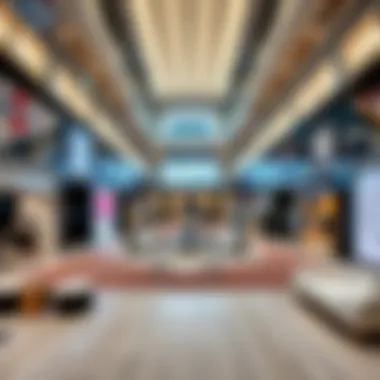
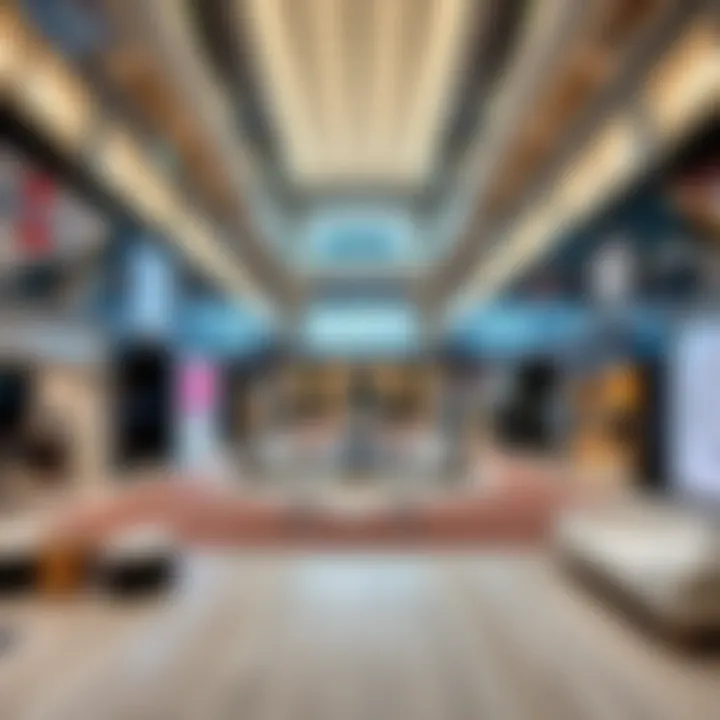
- Additional Stations: Adding new stops can drastically reduce travel time for visitors and residents alike.
- Integration with Other Transport Systems: Continued efforts to enhance integration with buses and future tram systems will improve overall mobility in Dubai.
- Sustainability Initiatives: Environment-friendly measures, such as energy-efficient trains and solar panels at stations, are being considered as part of the metro’s continued development.
The synergy between these future developments and existing attractions, like the Dubai Mall and Burj Khalifa, will likely catalyze economic growth and further elevate Dubai's status as a global city. As connectivity improves, one can expect not only a rise in property values but also a boost in investments, catering thoroughly to the discerning investors, realtors, and developers observing the evolving landscape of Dubai.
"The Dubai Metro does not merely serve as a transportation system; it is integral to the urban identity and economic vitality of the region, linking communities and spurring commercial activity."
With its continuous efforts in enhancing connectivity, the Dubai Metro is shaping the future urban sprawl, making it vital for anyone involved in real estate or urban development to stay updated with these changes.
For more information on the Dubai Metro and its services, visit RTA's official website.
Synergy Between Attractions
The synergy between the Burj Khalifa, the Dubai Mall, and the extensive metro system forms a unique trifecta that defines Dubai’s urban identity. Each of these attractions, while magnificent on their own, experiences amplified value when considered together. This interconnection plays a pivotal role in shaping not only the skyline but also the socio-economic landscape of the city, making it an essential aspect of any comprehensive guide to one of the world’s most iconic destinations.
Urban Planning and Design
Urban planning in Dubai has always been a forward-thinking endeavor, characterized by its desire to blend form with function. The placement of the Burj Khalifa at the heart of downtown, alongside the vast expanse of the Dubai Mall, is no coincidence. This layout encourages foot traffic and fosters an environment rich with opportunities for social interaction and commerce.
The design of these structures, with their dramatic heights and modern aesthetics, creates a visual harmony while drawing in visitors from across the globe. The sprawling pathways and interconnected zones create seamless transitions between shopping, dining, and leisure activities. For investors, such meticulous planning yields attractive property values, as demand surges in these vibrant areas where everything feels accessible.
The careful orchestration of public spaces around the Burj Khalifa allows for art installations, performance areas, and green spaces. As a result, visitors and residents alike enjoy an urban oasis that offers more than just concrete and steel. It sparks a vibrant cultural engagement, a factor that is crucial in urban living today.
Impact on Local Economy
The impact on the local economy from the synergistic relationship between the Burj Khalifa, Dubai Mall, and the Metro cannot be overstated. Together, they serve as a magnetic hub for tourists and locals, enhancing commerce and employment opportunities. Numerous reports indicate that areas surrounding these attractions have seen property values increase substantially, providing fertile ground for investors looking for lucrative returns.
- Employment Growth: The influx of tourists creates jobs, from retail to hospitality, thus fostering economic growth.
- Increased Revenue Streams: Local businesses benefit from the steady flow of visitors, leading to higher sales and a more vibrant marketplace.
- Attractive Investments: Real estate around the Burj Khalifa and the Dubai Mall continues to attract attention from developers and investors, driven by rising demand and interest.
"The fusion of monumental architecture with accessible spaces has turned Dubai into a global focal point, significantly boosting its economic stature."
In essence, the interaction of these attractions not only fortifies the economic framework but also enriches the city's lifestyle offerings, making it a dynamic place to live and work. Thus, for buyers and renters, investing in proximity to these landmarks represents both a chance at enjoying a high standard of living and a savvy financial decision.
Real Estate Implications
The interconnections between monumental structures such as the Burj Khalifa and Dubai Mall, combined with an efficient Metro system, have significant implications for real estate within the area. The attraction of tourists and investors alike can impact not only property values but also the broader economic landscape of Dubai. Investors and developers frequently look to optimize their investment strategies based on the characteristics of this well-trafficked urban area.
Proper understanding of these dynamics helps potential buyers and investors make informed decisions that could maximize returns.
The presence of high-profile landmarks creates desirability. This desirability leads to trends that influence property values, which can often see upward trajectory thanks to the influx of foot traffic and commercial interest.
Property Value Trends
In the vicinity of both the Burj Khalifa and Dubai Mall, property values exhibit a notable upward trend over recent years. The statistics suggest that properties in these locations may command significantly higher prices compared to other areas in Dubai. Some important factors influence these trends:
- Location, Location, Location: Properties close to landmarks fetch a premium due to their accessibility and the status they confer.
- Economic Expansion: With the growth of both local and international businesses, property demand outstrips supply, leading to an increase in value.
- Short-term Rentals: The popularity of the area for short-term stays elevates rental prices, attracting investors keen to capitalize on the tourism market.
Over time, strategic developments around these attractions also further drive property values upward. Investors should keep a keen eye on upcoming projects that may influence this dynamic.
Investment Opportunities
The real estate market surrounding the Burj Khalifa and Dubai Mall is overflowing with diverse investment opportunities for various stakeholders.
- Residential Investments
- Commercial Ventures
- Mixed-Use Developments
- Luxury Apartments: High-rise apartments in proximity to these landmarks hold great appeal, especially for expatriates and affluent locals looking for premium living situations.
- Short-term Rental Properties: Given the influx of tourists, securing a property designated for short-term rentals can yield high returns.
- Retail Spaces: Given the commercial significance of Dubai Mall, investing in retail properties can be lucrative.
- Office Spaces: The growth of businesses in the area means office spaces will also be in demand, particularly from companies targeting affluent clientele.
- Developers are increasingly leaning towards mixed-use spaces that combine retail, residential, and office areas. These developments often create comprehensive environments that appeal to diverse demographics.
Visitor Demographics and Behavior
Understanding the visitor demographics and behavior surrounding the Burj Khalifa, Dubai Mall, and the Metro is critical to grasping the broader implications for Dubai’s urban landscape. This comprehension allows stakeholders—from investors to city planners—to tailor their strategies according to the specific needs and trends exhibited by different visitor groups. Knowing who visits these sites, why they come, and how they engage with the surroundings can influence everything from marketing strategies to development plans.
Tourist Information
Dubai attracts millions of tourists each year. The Burj Khalifa and Dubai Mall stand as pivotal attractions, drawing diverse crowds. These visitors can be quite varied in their characteristics:
- Age and Profile: Tourists range from families with young kids to affluent business travelers. Each group has distinct needs, such as kid-friendly zones or high-end shopping experiences.
- Interests: While some visitors are keen on shopping sprees, others might be more inclined towards cultural encounters, like art exhibitions or culinary explorations.
- Stay Duration: Many global visitors tend to stay for a short period, perhaps a few days, often focusing on major attractions, leading to increased foot traffic in peak seasons.
This rich array of tourist profiles directly affects local businesses and can help them tailor offerings. For instance, hotels may adjust their amenities to appeal to families and corporate groups alike. Understanding this complexity aids in maximizing visitor satisfaction and operational efficiency.
Local vs. International Visitors
When parsing through the data on visitors to the Burj Khalifa and Dubai Mall, a clear distinction emerges between local and international visitors, each contributing to the dynamics of the economy and community in unique ways.
- Local Visitors: Residents often utilize the attractions differently. They may use the Dubai Mall for everyday shopping or leisure activities, reducing congestion during weekdays. Their familiarity with the area often leads to repeated visits, fostering a sense of community ownership over these landmarks.
- International Visitors: These tourists often visit with a fixed itinerary, making the most of their limited time. They are typically on the lookout for experiences that reflect Dubai's modernity coupled with rich Emirati culture. This pattern encourages businesses to maintain high standards and unique offerings, catering specifically to this group that seeks memorable experiences.
This interplay between local and international demographics enriches the cultural tapestry of Dubai, enhancing its reputation. The impact of such dynamics often represents both challenges and opportunities for stakeholders, whether they are in real estate development or hospitality. Setting clear pathways for both groups ensures a balanced growth of the tourism sector while maintaining the local charm and community spirit.
"Understanding the demographics helps shape a future-proof strategy for urban development and visitor engagement, reinforcing Dubai’s position as a global metropolis."
In summary, analyzing visitor demographics and behavior is not an academic exercise but rather an essential practice for all those invested in Dubai’s evolution. Stakeholders must remain agile and responsive to these insights as the city continues to expand its reach on the global stage.
Accessibility Challenges
The urban landscape of Dubai is a captivating mix of innovation and tradition, but it comes with its own set of challenges, especially regarding accessibility. When considering the Burj Khalifa and Dubai Mall, both serve as major attractions drawing millions of visitors each year. However, the functionality of these spaces is often hampered by various accessibility issues.
Understanding these challenges is essential not just for visitors but also for investors and developers aiming to create spaces that cater to all demographics. Accessibility shapes the experience and can influence decisions made by investors who might otherwise overlook the complexities involved in the user experience.
Public Transport Limitations
Transportation in Dubai has made significant strides, yet the public transport system still faces limitations that impact accessibility. The Dubai Metro is a state-of-the-art mode; however, not all metro stations offer seamless connections to major attractions like the Burj Khalifa and Dubai Mall. Some stations are a considerable trek away from the actual destinations, which could discourage pedestrians, especially those with mobility issues.
Moreover, while the metro boasts vast coverage, it doesn't always cater to all neighborhoods. If you're in Al Quoz, for instance, it can be tricky to catch a train without relying on taxis or rideshares. As such, public transport limitations create a dependency on private transport options, hindering easy access to some key areas.
Parking and Traffic Management
As the saying goes, "you can't squeeze blood from a turnip," and that seems apt when discussing parking difficulties around high-traffic regions like the Burj Khalifa and Dubai Mall. Given that these sites attract both locals and tourists alike, parking becomes a real headache. While there are multi-level parking garages, they tend to fill up quickly during peak hours.
Additionally, traffic congestion can lead to frustrating delays, and even seasoned residents might find themselves grinding their teeth in gridlock. A clear lack of real-time traffic updates further compounds this issue, making it difficult for those planning to drive.
Key Considerations
- Peak Hours: Traffic and parking difficulties increase noticeably during weekends and holidays.
- Accessibility Features: Some parking facilities have limited spaces for disabled visitors, adding to the challenges.
- Alternative Options: Ridesharing apps have become popular among locals, but they still depend heavily on the state of traffic.
Overall, the challenges posed by public transport limitations and parking constraints are essential to recognize. Addressing these issues could not only improve visitor experiences but also enhance property values, making it a critical point for any stakeholder involved in development or investment within the area.
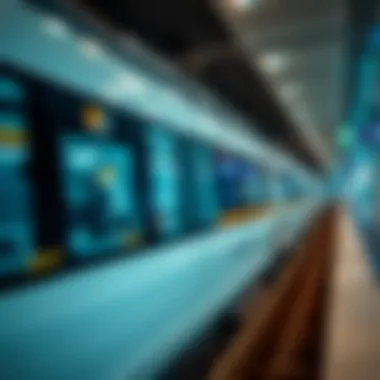
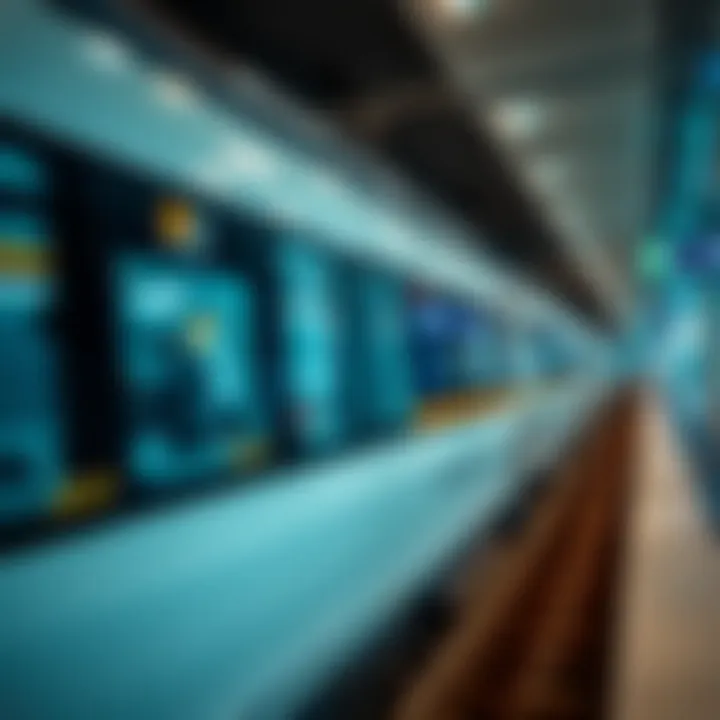
For a thorough overview of Dubai's public transport system and real estate dynamics, visit Dubai Road and Transport Authority or delve into statistics on visitor access at Wikipedia on Burj Khalifa.
By being aware of these challenges, stakeholders can take proactive measures to make accessibility a top priority, ensuring that the Burj Khalifa, Dubai Mall, and their surroundings remain welcoming to everyone.
Future Prospects: Urban Development
Urban development in Dubai is not just a passing phase; it's a substantial movement that shapes the skyline and significantly influences the way residents and visitors experience this bustling metropolis. In the context of the Burj Khalifa, Dubai Mall, and the metro system, it becomes evident that future prospects hold the promise for enhanced living standards, investment opportunities, and the overall enhancement of urban life in Dubai.
Upcoming Projects
As Dubai constantly reinvents itself, several upcoming projects warrant attention. One of the noteworthy initiatives is the expansion of the Dubai Metro network. New lines and stations are planned to increase connectivity, making it easier for people to navigate around the city. The planned route from Dubai Marina to the Expo 2020 site is set to facilitate the influx of visitors and residents alike.
In addition to transport expansion, mixed-use developments are becoming a hotbed for both residential and commercial growth. Projects like Dubai Creek Harbour aim to create a vibrant waterfront community with enhanced amenities, from parks to retail spaces. Furthermore, the growth of artificial islands, like the ones planned for the Waters Edge, seeks to provide not only luxurious living options but also recreational facilities that cater to the affluent lifestyle sought by both residents and tourists.
- Transformative Developments impact:
- Retail Experience: New shopping complexes designed to emulate the Dubai Mall’s success are in the pipeline.
- Residential Spaces: High-rise towers with panoramic views of the Burj Khalifa are planned to accommodate professionals attracted by the commercial growth.
- Cultural Efforts: More cultural centers and galleries are on the horizon, aiming to celebrate local heritage while promoting art and culture from around the globe.
Sustainability Initiatives
The future of urban development in Dubai isn't solely about expansion but also about fostering sustainable practices. With the UAE's commitment to sustainability, various initiatives are in place to ensure future projects align with environmental goals.
- Green Building Standards: New developments are increasingly required to meet green building regulations. This means energy-efficient designs, environmentally friendly materials, and sustainable water usage practices.
- Sustainable Transport Solutions: Beyond metro expansion, other transport options are being explored. Electric vehicle charging stations will become commonplace, alongside policies encouraging carpooling and the use of public transport.
- Community Eco Zones: Upcoming projects are incorporating green spaces within urban environments, like parks and community gardens. These spaces are not only vital for biodiversity but also serve as recreational zones for residents, promoting a healthier lifestyle.
"Sustainable initiatives in Dubai signify a shift towards greater awareness of our environment, serving as a reminder that while we build up, we must also give back to the land that supports us."
Culinary Scene at Dubai Mall
The Dubai Mall is not just a retail paradise; it’s also a haven for food enthusiasts. With a myriad of dining options that cater to every palate, the culinary landscape here plays a crucial role in enhancing the overall visitor experience. For many, a visit to this iconic complex isn't complete without indulging in the diverse culinary offerings. Whether you're a local seeking new flavors or a tourist eager to explore the city's gastronomic scene, the dining choices at Dubai Mall reflect the multicultural essence of Dubai itself.
Fine Dining Options
For those seeking an elevated dining experience, Dubai Mall is home to an impressive selection of fine dining establishments. High-end restaurants offer exquisite menus crafted by renowned chefs, fusing traditional culinary practices with modern techniques.
- Atmosphere and Experience: Many of these fine dining spots provide spectacular views of the Burj Khalifa and the Dubai Fountain, creating a breathtaking backdrop that enhances any meal. The ambiance is often upscale, featuring elegant decor and refined service that adds to the sense of occasion.
- Culinary Specialties: Dishes range from the luxurious such as seafood delicacies at places like Zuma, known for its contemporary Japanese style, to classic French cuisine at La Petite Maison. Each establishment aims to provide a memorable experience, focusing not just on taste but on the visual and sensory aspects of dining.
- Wine Selection: Many fine dining locations also boast extensive wine lists, sourced globally, that complement their dishes perfectly. This attention to detail not only elevates the meal but also offers guests an opportunity to learn about different wine pairings.
Casual Dining Choices
On the other end of the spectrum, Dubai Mall's casual dining scene presents a diverse array of options that appeal to those in search of relaxed, yet delightful meals. These spots embody the bustling nature of the mall while providing quality and value for diners.
- Variety and Accessibility: Casual dining ranges from well-known franchises to local favorites. For example, you might stop by Cheesecake Factory for a hearty meal or opt for authentic Middle Eastern dishes at Al Hallab. Each venue caters to families, tourists, and businesspeople alike, making them ideal for a quick yet satisfying meal.
- Family-friendly Atmosphere: Many of these dining choices offer a friendly environment perfect for families. Kids' menus are a standard feature in spots like Pizza Express, ensuring that even the littlest diners can find something they enjoy.
- Quick Bites and Cafés: If you’re just looking for a quick snack or a coffee break, there are plenty of cafés spread throughout the mall. Options like Starbucks and Paul Bakery provide plenty of seating for those wanting to rest their legs while enjoying a light bite or a caffeine boost.
In summary, the culinary scene at Dubai Mall is as diverse as the city itself. Whether indulging in an extravagant meal or enjoying a casual bite, diners are treated to an experience that reflects the richness of Dubai's cultural tapestry. As the mall continues to evolve, it will be fascinating to see how its culinary offerings expand further, keeping pace with the city’s ever-changing landscape.
Cultural Experiences Nearby
The cultural tapestry surrounding the Burj Khalifa and the Dubai Mall adds a remarkable dimension to the urban experience in Dubai. Exploring these experiences provides insights into the heritage and modern identity of this vibrant city. Knowing what's around these iconic structures, visitors and locals alike can gain a deeper appreciation of Dubai’s rapidly evolving cultural narrative.
Art Galleries
Art aficionados will find themselves intrigued by the burgeoning art scene that thrives within a stone's throw of the Burj Khalifa and Dubai Mall. One of the standout venues is the Alserkal Avenue, an established hub for contemporary art in Dubai. This complex is home to a variety of galleries showcasing both local and international talent. You’re likely to find exhibitions that feature everything from traditional Middle Eastern art to cutting-edge multimedia installations.
- Why visit? It’s not just about viewing art; it’s about engaging with it. Experimental performances, workshops, and collaborations often occur, inviting participation from visitors.
- Many galleries, like The Third Line and Leila Heller Gallery, hold regular events, enhancing their role as social spaces in addition to being showcases for artistic expression.
If you venture a little further, the Dubai Design District (d3) beckons with a mix of creativity and sophistication. It’s worth noting that not only does it have art galleries, but it also hosts design studios and creative warehouses, emphasizing the importance of design in contemporary culture. This location encourages visitors to immerse themselves in an innovative atmosphere where inspiration proliferates.
Performance Venues
For those whose passion lies in the performing arts, the nearby performance venues offer experiences that are second to none. The Dubai Opera, a beacon of culture, stands as an architectural marvel in its own right. With a façade resembling a traditional wooden dhow, it is not only a venue but a symbol of Dubai’s commitment to the arts.
- Types of Performances: From operas to concerts and ballet, this venue attracts world-class entertainers and a discerning audience. The lineup is nothing short of impressive, featuring both local artists and international talents.
- Additionally, venues like The Junction and Dubai World Trade Centre frequently introduce theatrical performances and seasonal concerts that are often met with critical acclaim.
To wrap up, these cultural experiences work to complement the high-energy commercial atmosphere of the Dubai Mall and the architectural grandeur of the Burj Khalifa. They provide visitors with a rounded perspective of what Dubai has to offer—beyond retail and skyscrapers.
"The convergence of culture, art, and commerce in Dubai not only reflects the city’s evolution but also serves as a magnet for those seeking both luxury and depth in experience."
The blend of art galleries and performance venues creates a fulfilling experience that meshes with the contemporary lifestyle of Dubai's residents and its millions of visitors each year.
Shopping Dynamics in Dubai Mall
Shopping in Dubai Mall isn't just about acquiring goods; it's an experience stitched into the very fabric of Dubai's culture and economy. The mall acts as a magnet for both tourists and locals, offering a mall-going experience that extends far beyond mere transactions. The dynamic between high-end retailers and emerging brands within its sleek, air-conditioned halls creates a complex shopping landscape, appealing to a variety of demographics.
Luxury Retailers
Dubai Mall stands as a testament to luxury retail. Here, high-profile brands like Louis Vuitton, Gucci, and Chanel line the spacious corridors, drawing in shoppers with deep pockets and an appetite for exclusivity. The allure of these luxury retailers goes beyond their coveted products.
- Extensive Selection: Shoppers find themselves spoiled for choice, with not just stores, but entire boutiques dedicated to unique items and one-of-a-kind pieces. The extensive curation of products speaks to an understanding of what luxury consumers desire.
- Personalized Service: High-end retailers often employ knowledgeable staff who can provide personalized attention, enhancing the shopping experience. This often includes private shopping sessions and special events, making customers feel valued.
- Experience Over Transactions: Luxury shopping at Dubai Mall emphasizes experience. From lavish store designs to private access events, it’s less about simply buying a handbag, and more about creating memories built around the act of shopping.
Through these offerings, luxury retailers position themselves not just as stores but as brands that provide a lifestyle. Their presence significantly elevates the perception of Dubai Mall as a premier shopping destination.
Emerging Brands
In clear juxtaposition to established luxury names, emerging brands are also carving out their niche within Dubai Mall. These brands may not yet boast the international recognition of their more established counterparts, but their innovative and fresh perspectives contribute to the mall's dynamic.
- Cultivating Diversity: Entrepreneurs are becoming more prevalent here, with concepts that focus on sustainability, craftsmanship, and unique narratives. Brands like The Giving Movement, which focuses on ethical fashion, appeal to the socially conscious shopper.
- Engagement with Trends: Emerging brands often utilize social media to promote their products, engaging with younger audiences who value originality over brand heritage. Their marketing strategies are increasingly tailored towards creating connection rather than just sales.
- Pop-Up Experiences: Many of these brands take advantage of pop-up shops within the mall, allowing them to test the waters without sinking in significant investment. This enables shoppers to discover something new with each visit.
Emerging brands not only diversify the shopping experience but also encourage innovation and creativity within the larger retail space.
By embracing both luxury and emerging brands, Dubai Mall encapsulates the breadth of the retail experience and caters to a wide range of preferences. This synergy makes it a microcosm of Dubai's broader economic landscape, bridging cultural divides while showcasing the latest in shopping tendencies.
As such, understanding the shopping dynamics here can offer valuable insights for investors, realtors, and developers looking to engage in the ever-evolving landscape of Dubai's retail environment. Each brand—whether they be established or budding—plays a crucial role in shaping shopping behaviors and preferences in this vibrant city.
Effective Transportation Strategies
In a city where the skyline is punctuated by the shimmering heights of the Burj Khalifa and the sprawling expanse of the Dubai Mall, effective transportation strategies form the backbone of an integrated urban experience. These strategies not only ensure a seamless flow of visitors and residents but also foster economic growth and connectivity in one of the world’s most dynamic metropolitan areas.
Using the Metro System
The Dubai Metro stands out as a prime example of forward-thinking urban transport. Its convenience can't be overlooked; with several stations strategically located near key attractions, including the Burj Khalifa and the Dubai Mall, it provides a hassle-free alternative to driving. The Red Line and Green Line offer comprehensive routes that link major districts, creating an efficient network that minimizes travel time.
Benefits of Metro Utilization:
- Cost-Effective: Riding the metro is cheaper than other modes of transport, making it accessible for both locals and tourists.
- Speed and Reliability: Trains run frequently and punctually, allowing commuters to plan their journeys without heavy delays.
- Avoiding Traffic Congestion: As traffic jams are common in Dubai, the metro serves as a savvy escape from the gridlock, especially during peak hours.
- Environmental Impact: The metro promotes a focus on sustainability, encouraging public transport over individual car use, which can help reduce the carbon footprint.
The system also includes user-friendly features such as air-conditioned stations and automated ticketing, ensuring a pleasant experience.
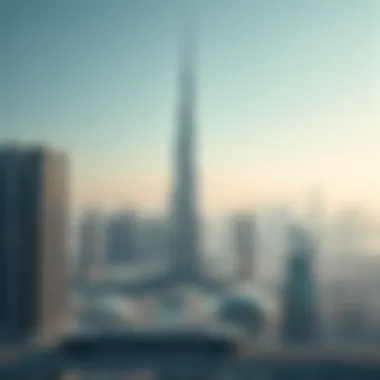
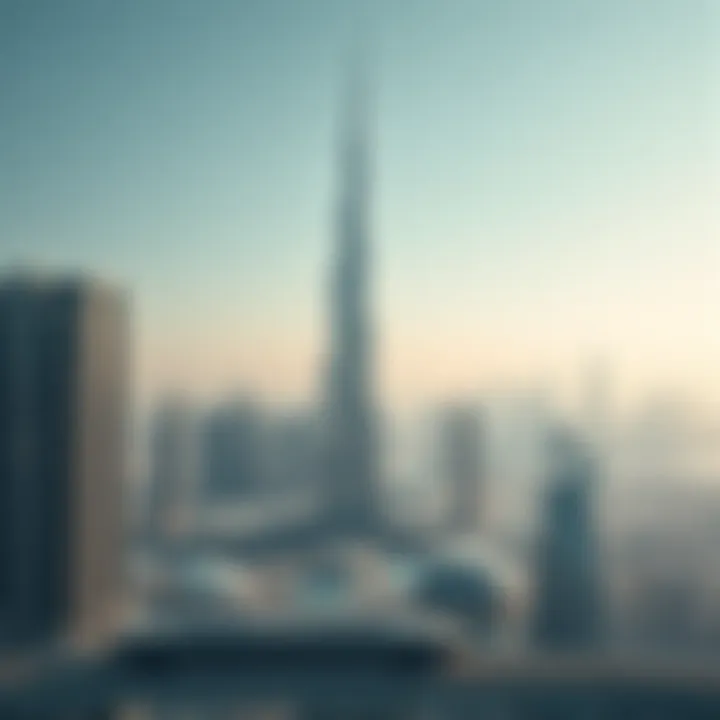
Alternative Transport Methods
While the metro offers a solid backbone for transportation, there are plenty of alternative transport methods to consider that enhance the overall mobility experience.
Options Include:
- Buses: The bus network is extensive and complements the metro. They cover even more ground, reaching areas that the metro does not.
- Taxis and Ride-Sharing Services: Services like Careem and Uber have gained traction. These apps provide quick access to rides, perfect for those in a hurry or desiring door-to-door service.
- Bicycles: Dubai has been improving its bicycle lanes, particularly in areas like Downtown. For those willing to brave the heat, cycling can be a refreshing way to navigate short distances.
- Walking: In the cooler months, walking between attractions can be delightful. The area around the Burj Khalifa and the Dubai Mall is pedestrian-friendly with plenty of sights along the way.
In essence, a harmonious blend of transportation methods fosters connectivity and enhances the overall visitor experience. Whether opting for the underground speed of the metro or the convenience of a taxi, Dubai’s transport system is built to cater to a diverse array of preferences.
Thus, in considering effective transportation strategies, one recognizes the pivotal role they play within the broader context of urban planning and real estate development in Dubai. Investors, realtors, and developers alike benefit from understanding these dynamics, as they directly influence not only property values but also the livability of the area.
Security and Safety Measures
In the realm of urban tourism and real estate, security and safety measures play a crucial role, particularly when discussing prominent structures like the Burj Khalifa and the Dubai Mall. Not only do they ensure the safety of visitors and residents, but they also significantly influence the area's economic viability and the perception of safety among prospective investors. A sound security framework strengthens the attractiveness of these landmarks and contributes to the overall experience.
Surveillance Systems
Surveillance systems in and around the Burj Khalifa and Dubai Mall are meticulously designed to offer comprehensive security coverage. The presence of CCTV cameras, which are strategically placed in critical areas, enhances real-time monitoring and helps prevent potential threats. This type of system operates 24/7, providing a safeguard that is particularly reassuring for both tourists and locals.
- High-definition Cameras: Many units are equipped with high-resolution technology, ensuring clear image capture day and night.
- Remote Monitoring: Security personnel can monitor feeds from multiple locations, allowing for quick response to any incidents.
- Facial Recognition Technology: This cutting-edge feature helps identify known offenders or individuals posing a potential risk, further enhancing security measures.
The investment in these systems is essential. It’s not just about averting crime, but also about creating a sense of security that encourages people to visit and engage with the area. As a direct result, this attracts businesses and investments in the adjoining real estate, proving that safety measures have a substantial economic impact.
Emergency Protocols
In emergency situations, having well-defined and practiced protocols is fundamentally important. The developers of the Burj Khalifa and the management at Dubai Mall have established precise emergency procedures that ensure swift action should any crisis arise.
- Evacuation Plans: Clear and concise evacuation procedures are essential. Signs are prominently displayed throughout the buildings, guiding individuals toward safe exits in case of an emergency.
- Regular Drills: Conducting regular emergency drills not only prepares the staff to respond accordingly but also familiarizes visitors with evacuation routes. The training fosters an environment of preparedness, which is vital during emergencies.
- Collaboration with Local Authorities: The entities manage close ties with local emergency services, ensuring that first responders are well-coordinated and can swiftly reach the site if needed. This collaboration is vital for effective handling of situations, ensuring minimal disruption to the public.
Having robust emergency protocols in place reinforces the perceived safety of the area. Prospective investors looking at properties around the Burj Khalifa and Dubai Mall take comfort in knowing that comprehensive safety measures are not merely an afterthought, but a priority that significantly contributes to the property values.
"Simply put, strong security and effective emergency protocols do not just protect; they also enhance the overall experience of visiting one of the world's most iconic landmarks."
In summary, the integration of complex surveillance systems alongside well-structured emergency protocols demonstrates a commitment to safety in these bustling urban hubs. For investors, realtors, and residents, understanding these measures is integral to recognizing the value they bring within this vibrant landscape.
Diverse Leisure Activities
Diverse leisure activities play a crucial role in enhancing the visitor experience around the Burj Khalifa, Dubai Mall, and the connected metro system. These activities not only contribute to the overall ambiance but also create a vibrant community dynamic that attracts both tourists and locals alike. In a city that prides itself on luxury and innovation, offering a plethora of choices in leisure invites more foot traffic and builds the appeal of the urban landscape.
Entertainment Options
When it comes to entertainment, the offerings around these iconic structures are nothing short of astonishing. The Dubai Mall, for instance, isn't merely a shopping destination; it's home to a plethora of entertainment venues that appeal to a wide demographic. The Dubai Aquarium & Underwater Zoo draws visitors with its awe-inspiring displays of marine life. For families, the VR Park allows guests to step into virtual realities that redefine the limits of gaming.
Moreover, performance arts play a significant role in the entertainment scene. Venues like the Dubai Opera host world-class performances, from operas to ballets, captivating an audience that appreciates the finer things in life.
- Live Shows: Regular performances including concerts and theater shows.
- Events and Festivals: Seasonal markets and cultural festivals.
- Cineplex: A state-of-the-art cinema that shows all the latest blockbusters.
Outdoor Activities
In addition to the indoor attractions, outdoor activities make a significant contribution to the leisure landscape. The area surrounding the Burj Khalifa and Dubai Mall is also designed to be pedestrian-friendly, allowing locals and tourists to enjoy the outdoors. The iconic Dubai Fountain offers a remarkable spectacle every evening, featuring a choreographed dance of water and light.
Moreover, walking paths and leisure areas allow for relaxation and social interaction. The Burj Park, located at the base of the Burj Khalifa, provides a green space to unwind, complete with views of the tower itself. This integration of outdoor elements fosters an environment where visitors can connect with nature amidst the urban architecture.
- Running and Cycling Trails: Promoting healthy lifestyles and fitness.
- Picnic Spots: Designated areas for families and friends to enjoy meals together.
- Markets and Arts Stalls: Local artisans display their craft, giving visitors a glimpse into the city’s cultural richness.
"The blend of leisure and commerce in Dubai is unlike any other, creating a unique atmosphere that continues to draw people in."
Overall, understanding the significance of these leisure activities is key for investors, developers, and planners looking to enhance the urban environment while capitalizing on what makes this city one of the most dynamic places in the world.
Urban Green Spaces
Urban green spaces are often the forgotten jewels in the heart of bustling metropolises like Dubai. In the context of the Burj Khalifa, the Dubai Mall, and the metro system, these areas provide much-needed respite from the urban chaos. They establish a vital connection between nature and the modern architectural wonders that define the area. We’ll delve into the importance of these spaces, examining their benefits and some considerations that come along with them.
Adjacent Parks
Parks adjacent to towering structures like the Burj Khalifa create an engaging contrast. Al Wasl Park and Burj Park are prime examples, serving as lush oases nestled amidst the concrete landscape. These parks cater to locals and tourists alike, offering an area for recreation, relaxation, and connection.
- Benefits of Adjacent Parks:
- Mental Health: Parks enhance well-being, providing a space for stress relief and leisure activities. People often find that time spent in green surroundings can elevate their mood and stimulate creativity.
- Civic Engagement: Events hosted at these parks foster community spirit. From art exhibitions to family-friendly fests, parks become social centers that enhance the urban experience.
- Environmental Impact: Parks improve air quality and promote biodiversity. Trees and plants act as natural filters, contributing to a healthier ecosystem.
In a city where space is often at a premium, the strategic incorporation of these parks into urban design cannot be overstated. They add life to the surroundings, making the experience of visiting the Burj Khalifa and Dubai Mall far more enriching than just the consumption of luxury.
Sustainable Landscaping
In the grand scheme of urban development, the concept of sustainable landscaping has gained ground. This practice entails utilizing eco-friendly materials and indigenous plant species to craft vibrant landscapes that require less water and maintenance over time.
- Benefits of Sustainable Landscaping:
- Water Conservation: By using drought-resistant plants, sustainable landscaping minimizes water usage, a crucial consideration in Dubai’s arid climate.
- Biodiversity Encouragement: Using native plants supports local wildlife, creating habitats within the urban setting. It transforms concrete jungles into living ecosystems, emphasizing symbiosis with nature.
- Energy Efficiency: Properly designed green spaces can help in regulating temperature, leading to reduced energy consumption in nearby buildings during hot summer months.
Implementing sustainable landscaping practices around the Burj Khalifa and Dubai Mall not only enhances the aesthetic appeal but also plays a significant role in promoting environmental stewardship.
Park areas close to large commercial hubs act as lungs for the city, filtering pollutants and providing a serene escape for both residents and visitors.
Incorporating these green spaces and sustainable practices within Dubai's ambitious urban planning reflects a commitment to balancing modern development with ecological preservation. Future investors and developers should consider these factors, recognizing that the value of a property is not solely tied to its luxury but also to the quality of life it provides to inhabitants.
Epilogue: The Integrated Experience
The integration of the Burj Khalifa, Dubai Mall, and the Metro system exemplifies a well-thought-out interplay of architecture, commerce, and transport. This trio not only enhances the skyline of Dubai but also embodies the aspirations of the city itself—luxury, innovation, and convenience. The seamless flow between these attractions underscores how urban planning can be done with a vision that recognizes the necessity for connectivity alongside aesthetic appeal.
Understanding this synergy offers several benefits. For instance, visitors find that moving from the towering heights of the Burj Khalifa to the luxury shopping at Dubai Mall is as easy as pie. This direct access encourages longer stays and repeat visits, fuelling the local economy. The presence of the Metro provides an added layer of accessibility that attracts tourists and residents alike, bridging distances that would otherwise feel cumbersome in a bustling metropolis.
Moreover, the recognition of these elements not only serves tourists but also enhances the living experience for residents. By interlinking recreational spaces with high-end shopping and dining, Dubai sets itself apart as a unique destination, one that caters to both leisure and lifestyle needs.
"The greatest luxury in urban living is not just in what one can buy, but in how one can effortlessly navigate through life’s experiences."
Summary of Insights
In wrapping up this discussion, it's crucial to reflect on the insights garnered from exploring the interconnectedness of the Burj Khalifa, Dubai Mall, and the Metro.
- Tourism and Commerce: The attractions draw millions annually, with a continuous flow of both international and local visitors, enhancing the economic landscape of Dubai.
- Urban Design: Thoughtful urban design maximizes the potential of high-quality public transport, making it imperative for future developments.
- Cultural Influence: These landmarks are more than just structural; they serve as catalysts of cultural exchange and social interactions, shaping a cosmopolitan identity for Dubai.
By analyzing the integrated experience, it reveals how urban spaces can become areas of interaction, trade, and enjoyment while ensuring that convenience is at the forefront.
Implications for Investors and Residents
For investors and residents, recognizing the dynamics at play in this sector is essential for making informed decisions. The following considerations are important:
- Real Estate Opportunities: Properties surrounding these iconic sites show consistent appreciation. Investors might find considerable potential in acquiring residential or commercial real estate in proximity to the Metro and the Mall.
- Quality of Life: Residents enjoy a lifestyle enriched by superior amenities and reduced travel time. Having upscale facilities and entertainment options nearby fosters community and enhances living standards.
- Sustainable Development: As Dubai continues evolving, focusing on sustainability will define future investments. Properties incorporating eco-friendly technologies are likely to gain traction.
- Market Trends: Staying updated on market trends linked to tourism can provide a significant edge for real estate professionals. The interconnectivity provided by the Metro highlights the relevance of transportation infrastructures in property valuations.





